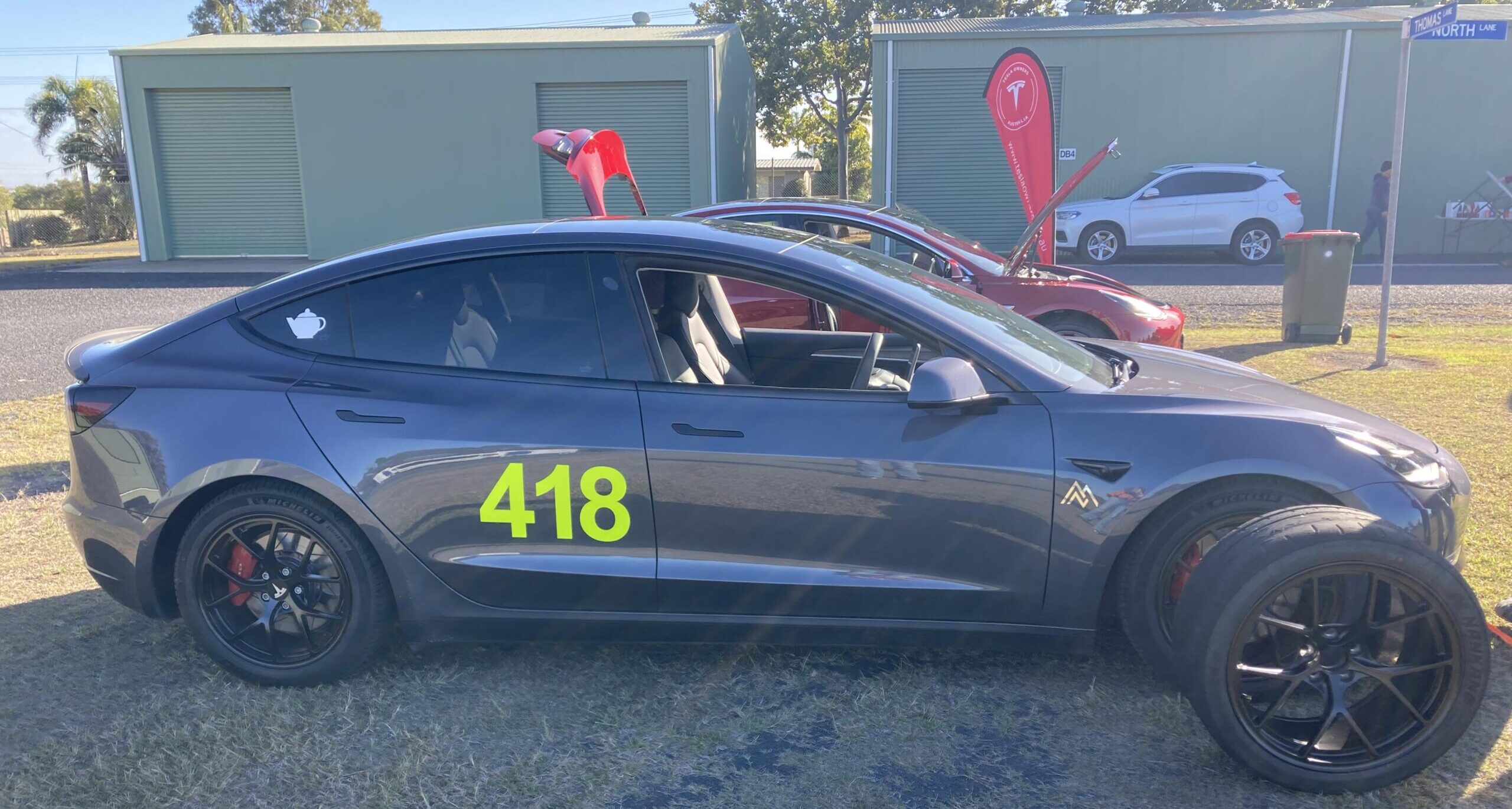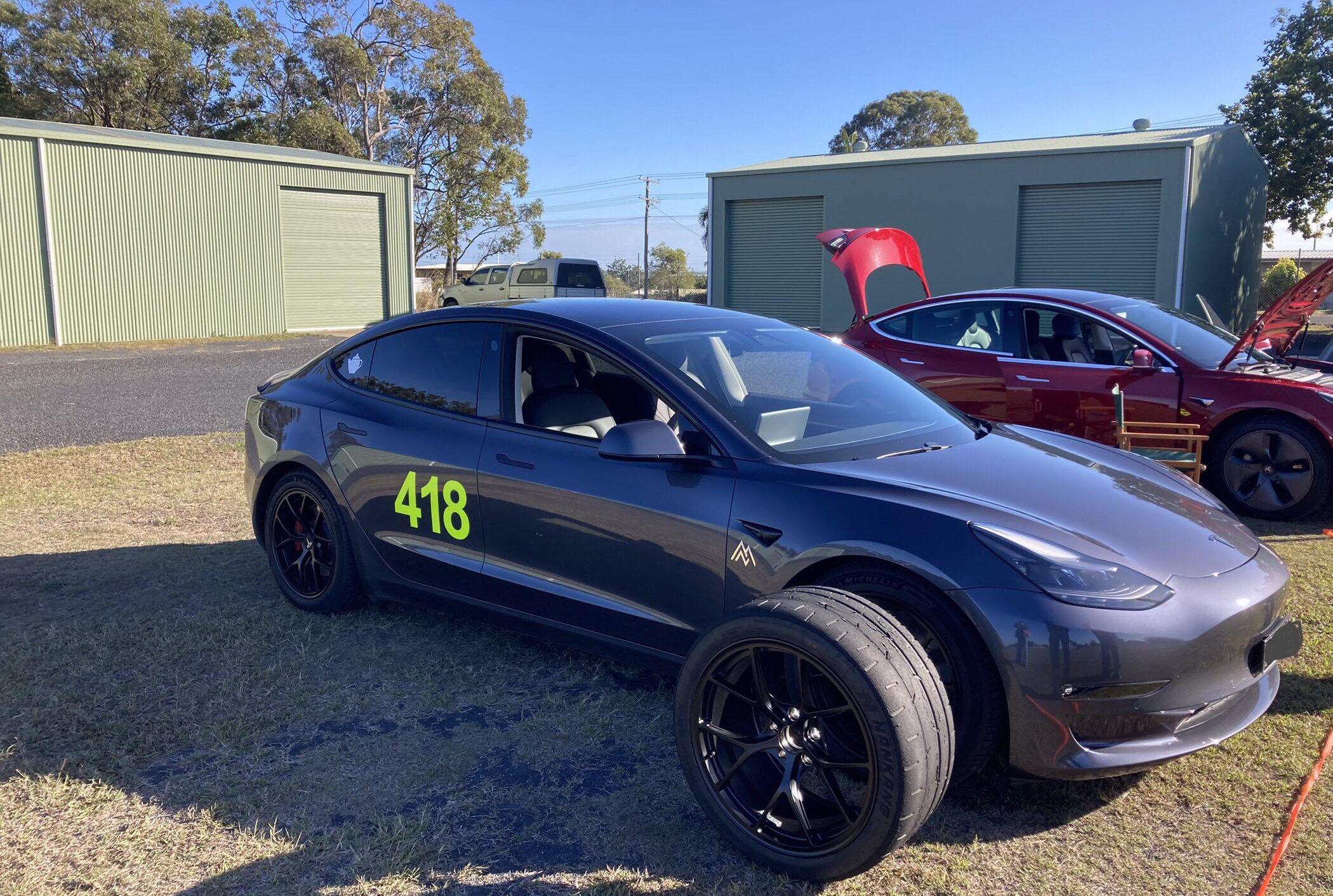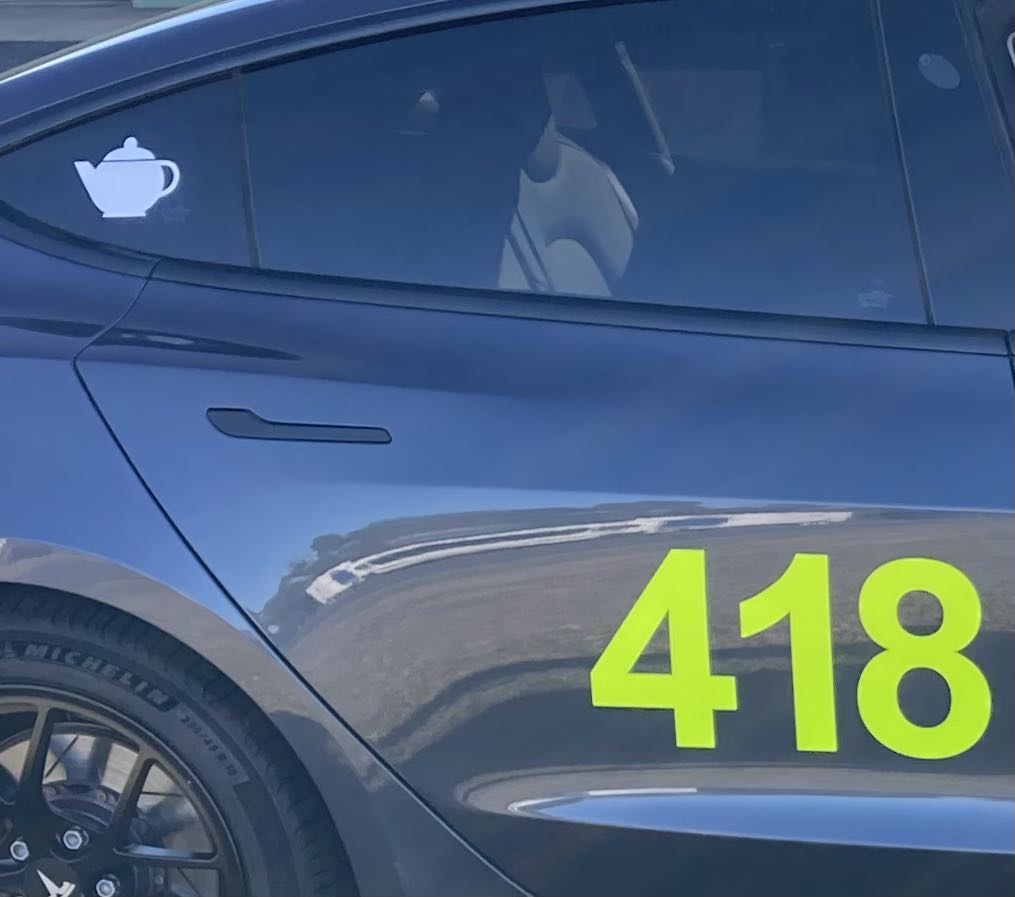
Robert Isaac, self-confessed über-nerd and track racer, brought his modified Model 3 Performance to our electric vehicle event in Bundaberg a couple of weeks ago and told me his fascinating story. He has allowed me to share it with the readership of CleanTechnica. Enjoy.
By Robert Isaac
I’ve been a car enthusiast since first doing an engine and gearbox swap in a Mitsubishi Sigma more than twenty years ago. I’ve been interested in motorsport for more than twenty years too. I ended up turbocharging the Sigma and putting in rally suspension and upgraded brakes.
About fifteen years ago, I decided a petrol car was too inefficient for just getting me around, so I moved to a small motorcycle and sold the car. I ended up going through a few motorcycles but never lost the excitement in modification, and in performance riding. I didn’t participate in motorsport on the bikes, but it was always on my mind. I ended up getting around on an electric motorcycle during the pandemic period and even upgraded to a Braaap MotoE after a while.
I used the twelve years on motorbikes to put away some money to go fully electric. First I got solar, then an electric mower and whipper snipper, then the electric motorcycle. In 2021, I bought a Tesla Model 3 SR+ and modified it for light performance driving. I went to a few motorkhana and skid pan days with Skid Control and loved how well the car performed, while still retaining perfect street manners and outrageously low running cost. Then I bought a second set of wheels and a big brake kit and took it to Queensland Raceway to go around the track (the one with corners; not drag racing) for a sprint day. I was hooked and enjoyed the part-Tesla, part-BMW driving feel of the car post-modification. It was competitive with a naturally-aspirated Nissan 350Z and had consistent performance through the top 80% of the battery.
Then, early this year, I got an offer too good to refuse on a poorly-treated Tesla Model 3 Performance. The interior smelled a bit, the paint was rarely washed and full of stone chips, the tyres had clearly been abused with inadequate pressure, and the undertrays were full of rocks, leaves, and dirt. But I took it for a test drive and the suspension, brakes, and steering all behaved perfectly. It would be a perfect base for modification, so I sold the Model 3 SR+ to buy the Model 3 Performance.
Basically none of the parts from the Model 3 SR+ were directly transferable to the Model 3 Performance, so I started making a list of what parts I wanted in order to build my perfect track-capable street car. The goal was full confidence and capability at the track with big sticky tyres, and a firm but refined (à la Porsche) ride on the street. I had narrow 18″ wheels made to clear the Model 3 Performance brakes but to let me run comfortable and efficient street tyres, while a second set of wide 19″ wheels would give me access to the easy-to-find 275/35R19 tyre size for the track.
The parts list is pretty solid. Not much of the factory suspension remains factory at all. For brakes, only the calipers are factory when set up for the track.
Parts from Mountain Pass Performance:
- MPP Sports coilovers
- MPP SuperSports springs (higher spring rate)
- MPP Front Upper Control Arms for quick and easy camber adjustment
- MPP Front Lower Control Arm spherical bearing to tighten steering dramatically
- MPP Front Radius Arm spherical bearing to keep it stable under hard braking at high speed
- MPP Rear Traction, Trailing, Camber, Toe and Spring arms for tight rear end and weight saving
- MPP Page Mill directional front and rear brake rotors
- MPP brake lines and Pagid racing brake pads
- MPP lightweight lithium 12V battery
- MPP Partybox and Cooling Party controller for customising cooling, traction control, stability control and e-Diff
- Tevo brake master cylinder brace
- Whiteline front and rear adjustable swaybars
- Unplugged Performance rear lip spoiler with gurney flap for rear downforce (to cancel the inherent lift above ~160km/h)
Wheels and tyres:
- Street — 18″x8″ custom forged wheels with 235/45R18 Michelin Primacy 4+ (would probably be e.Primacy if they’d been available)
- Track — 19″x10″ custom forged wheels with 275/35R19 Nankang CR-S
When I have a track day, it takes me about an hour to change all four wheels, adjust all four dampers, and increase the front camber to 3.6 degrees and rear to 2.6 degrees (with correct alignment). The following morning, it takes the same hour to return the whole car to street wheels and street alignment. I get to have my cake and eat it too; no tyre wear or economy issues for street use, no noisy exhaust, laggy turbo, or stiff clutch pedal. My partner and my mother are quite comfortable driving the car in “chill” mode. It’s a modified sports car without compromise.
Behind just enjoying motorsport, my big motivation in taking the car to the track (and leaving the racing numbers on full time) is to prompt people to come and talk to me about the car. There are endless articles spruiking the environmental credentials of electrifying transport. The sports-ish EVs are targeting the luxury performance market. I wanted to be an early example of driving a Tesla competitively at the track, and showing people that EVs are not the death of motorsport or of modifying vehicles, and that they’re wonderful to live with even modified.
All in all, I’ve had a surprisingly positive response. For people who haven’t seen it at the track before, I get a mix of curious and doubtful looks. But after the first session, the car gets fairly universal respect for its performance. Not everyone is convinced that sports cars should be quiet, but every outing I get one or two people asking more questions than curiosity alone would explain.
Oh, and the teapot thing is a call-out to my fellow über-nerd. My permanent racing number is 418. The car is named “Teapot Trixie” giving reference to both HTTP status code 418 and a character from Speed Racer — Trixie. Very few people have ever seen the HTTP status code 418 let alone read into its history, but it’s an interesting little piece of Internet history. It’s an error code that belongs to the Hypertext Coffee Pot Control Protocol (HTCPCP). That first link tells the story in brief, and this second one is the Wikipedia article for more proper timeline and referencing.
Let’s cheer on Rob and his teapot racer in his quest to show that sports cars don’t need to be quiet and EVs can be speed racers.
I don’t like paywalls. You don’t like paywalls. Who likes paywalls? Here at CleanTechnica, we implemented a limited paywall for a while, but it always felt wrong — and it was always tough to decide what we should put behind there. In theory, your most exclusive and best content goes behind a paywall. But then fewer people read it! We just don’t like paywalls, and so we’ve decided to ditch ours. Unfortunately, the media business is still a tough, cut-throat business with tiny margins. It’s a never-ending Olympic challenge to stay above water or even perhaps — gasp — grow. So …
Sign up for daily news updates from CleanTechnica on email. Or follow us on Google News!
Have a tip for CleanTechnica, want to advertise, or want to suggest a guest for our CleanTech Talk podcast? Contact us here.
Former Tesla Battery Expert Leading Lyten Into New Lithium-Sulfur Battery Era:
CleanTechnica uses affiliate links. See our policy here.







